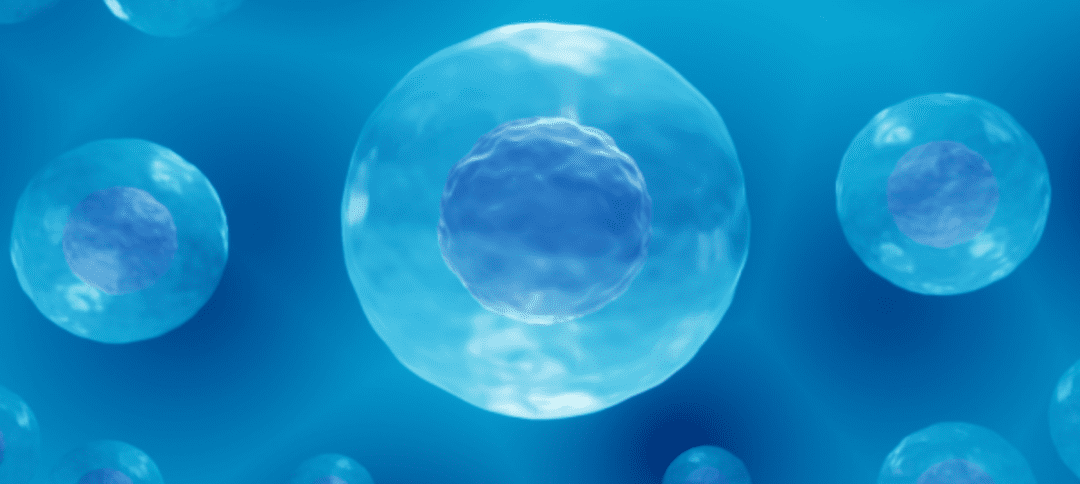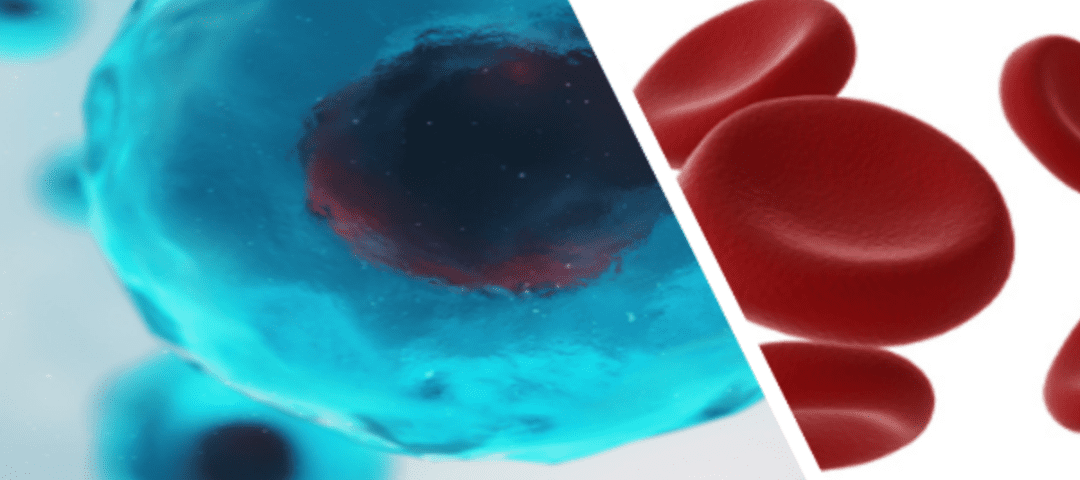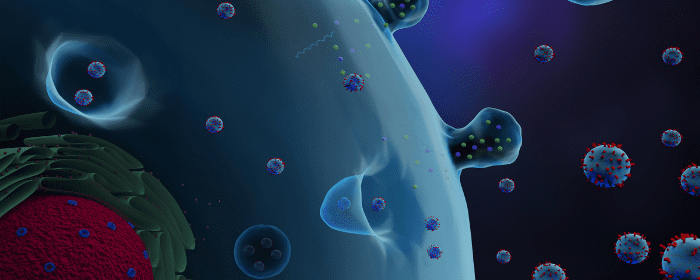
by Stemedix | Nov 7, 2022 | Regenerative Medicine, Stem Cell Therapy
Chronic pain can develop anywhere in the body. It can develop from conditions like arthritis, result from a traumatic injury, or serve as an ongoing symptom of diseases such as cancer or neuropathic pain from diabetes. Often, patients suffering from chronic pain feel their only options for relief are ongoing medications to mask their symptoms or surgery, like a knee replacement to treat chronic knee pain. However, regenerative medicine, also known as stem cell therapy, offers a new option for chronic pain patients to explore that may be especially beneficial for those hoping to avoid surgery. Here we will break down why you should choose regenerative medicine over surgery.
Stem Cell Treatments Have Lower Risks than Surgery
You may want to avoid surgery for many reasons, and the risks of anesthesia and the potential for complications with large incisions are essential factors to consider. Stem cell therapy does not require general anesthesia, and since the process only requires injections, not incisions, there are no surgical wounds or scars.
If you’ve had an adverse reaction to anesthesia or possess risk factors for experiencing a negative response, such as age or a coexisting condition, stem cell therapy offers a non-surgical alternative to finding relief.
Stem Cell Treatments Require Minimal Downtime
Suppose that you lead an active, busy lifestyle. In that case, you probably don’t have time for an extended recovery period, especially when that recovery time keeps you from essential activities like driving or walking.
While most surgeries to alleviate chronic pain require extensive downtime, patients who choose stem cell treatments typically return to work or daily activities within a few days. Although stem cells do take time to heal damaged tissues, many patients begin to experience pain relief within two to three weeks.
Surgery Doesn’t Guarantee Pain Relief
When your chronic pain leads you to the point where you’re willing to undergo surgery, you want to know that the preparation, procedure, downtime, and expense will alleviate your pain. Unfortunately, however, that’s not always the case.
A 2018 study showed that 20% of those who undergo a total knee replacement still live with chronic knee pain. In addition, another study revealed that up to 58% of patients who undergo hip replacement surgery continue to endure persistent pain.
Stem Cell Treatments Are Effective and Non-Invasive
It can be hard to believe that stem cell injections can potentially offer similar, if not better, results than surgery. However, research following patients for two years after their stem cell treatments found all participant groups, regardless of age or BMI, experienced significant pain improvement. Patients who feel surgery is their only option to alleviate chronic pain should ask their doctor about the benefits of pursuing stem cell therapy. If surgery is unavoidable, stem cell therapy can also help post-surgery to help improve healing time and reduce pain. If you would like to choose regenerative medicine over surgery contact Stemedix today!

by admin | Nov 4, 2022 | Stem Cell Therapy, Mesenchymal Stem Cells, Rheumatoid Arthritis, Stem Cell Research
Mesenchymal stem cells (MSCs) have demonstrated the ability to differentiate into a number of different cells; they also demonstrate immunomodulatory properties that have great potential for use as a stem cell-based therapeutic treatment option and for the treatment of autoimmune diseases – including rheumatoid arthritis (RA).
RA is a chronic and debilitating inflammatory disorder that not only affects the joints, muscles, and tendons, but also damages a number of other body systems, including the eyes, skin, lungs, heart, and blood vessels[1]. It is estimated that roughly 1.5 million Americans are afflicted by RA. While the exact cause of RA is not yet fully understood, the condition is one of over 80 known autoimmune diseases occurring as a result of the immune system mistakenly attacking the body’s own healthy tissue.
Current treatment of RA primarily involves the use of steroids and antirheumatic drugs used primarily to manage associated symptoms of the condition, rather than treat the condition itself. These drugs are also commonly associated with a number of unwanted side effects with users often developing resistance to the medication after prolonged use.
Considering the relative ineffectiveness of drugs designed to treat RA and RA-associated symptoms, scientists have turned to investigate the use of MSC-based therapy as a potential treatment for RA.
As part of this investigation, Sarsenova et al. examined both conventional and modern RA treatment approaches, including MSC-based therapy, by examining the connection between these stem cells and the innate and adaptive immune systems. This review also evaluates recent preclinical and clinical approaches to enhancing the immunoregulatory properties of MSCs.
Through a number of in vitro studies, researchers have realized that MSCs have the ability to inhibit the proliferation of effector memory T cells which, in turn, prevents the proliferation of inflammatory cytokine production. Additionally, these studies have also demonstrated that MSCs are able to modulate functions of the innate immune system by inducting the inflammatory process and activating the adaptive immune system.
Preclinical studies have demonstrated the ability of MSCs to suppress inflammation both through interactions with cells of the immune system and through paracrine mechanisms. This has been demonstrated to be very important as cells of the innate immune system have been shown to have an important role in both the development and progression of RA.
While a number of clinical studies evaluating the effectiveness of MSC-based therapies for the treatment of RA were still ongoing at the time of publication, the nine completed studies primarily demonstrated that using MSCs for the treatment of RA is safe, well tolerated in both the short and long-term, and provides clinical improvements in RA patients.
Despite the many positive and promising outcomes observed through these clinical trials, the authors of this review also point out some limitations associated with the treatment of RA with MSCs. These limitations include many of the referenced studies lacking a placebo control, low enrollment in some studies, and a lack of optimal protocol (for both MSC sourcing and route of administration) for RA treatment with MSCs.
Considering these limitations, Sarsenova et al. point out the need for more well-defined and effective therapeutic windows for the treatment of RA with MSCs, including MSC priming to promote an anti-inflammatory phenotype, in a future study as a way to better understand the perceived benefits of a stem-cell therapy for the treatment of RA and other autoimmune diseases.
Source: “Mesenchymal Stem Cell-Based Therapy for Rheumatoid Arthritis.” 27 Oct. 2021, https://www.ncbi.nlm.nih.gov/pmc/articles/PMC8584240/.
[1] “Rheumatoid arthritis – Symptoms and causes – Mayo Clinic.” 18 May. 2021, https://www.mayoclinic.org/diseases-conditions/rheumatoid-arthritis/symptoms-causes/syc-20353648. Accessed 5 Oct. 2022.

by Stemedix | Oct 24, 2022 | PRP, Stem Cell Therapy
Stem cell therapies and platelet-rich plasma (PRP) are regenerative medicine treatments that use the body’s natural healing mechanisms to repair damage and restore function. Unlike traditional medicine, which often works to alleviate symptoms instead of targeting the source of pain or illness, regenerative treatments aim to heal the underlying cause of pain or dysfunction. PRP & stem cells often have overlapping benefits and sometimes are used interchangeably. However, the treatments have some significant differences.
What Is PRP Therapy?
Platelets are cells within the blood that identify damaged areas and bind together to start the healing process. Platelet-rich plasma comes from a sample of the patient’s blood placed in a centrifuge that separates and concentrates the platelets in the plasma.
Once concentrated, the PRP contains three to five times the platelets as a blood sample. Next, a physician administers the PRP into damaged or injured areas to expedite healing.
When you cut your hand, your platelets form a clot to stop the bleeding. The clot releases growth factors into the injured area to trigger the body’s repair response. The growth factors are released in varying intervals, drawing stem cells and new blood vessels to the injury site to promote healing through new blood and oxygen.
What Is Stem Cell Therapy?
Stem cells are found throughout the body, mostly lying dormant until there’s an injury that triggers them to react. Then, they’re the only cells in the body capable of division and differentiation. When stem cells divide, they create more stem cells. However, when stem cells differentiate, they make specialized cells, like blood or brain cells.
Like PRP, stem cells initiate the body’s healing response. But stem cells can also repair and regenerate damaged tissue. For example, stem cells can offer pain relief by restoring diseased or injured tissue with long-term results.
How Do the Treatments Differ?
The critical differences between stem cell therapy and PRP therapy come from how they work and where they’re most effective.
Platelet-Rich Plasma
PRP’s key benefit is the therapy’s ability to initiate and accelerate healing. The platelets’ growth factors can:
- Regulate inflammation
- Trigger the growth of new blood vessels
- Activate the nearby cells’ healing activities
- Protect healthy tissues
Since PRP mainly offers healing benefits, this therapy is often preferred to promote healing from musculoskeletal injuries.
Stem Cell Therapy
Stem cells go beyond repairing tissue and can also regenerate damaged cells. Since stem cells can serve all the functions of PRP and convert to any tissue the body needs, they can treat musculoskeletal injuries and degenerative conditions, such as arthritis.
Stem cell therapies have the capability to replace and repair tissues to remedy the source of pain or damage, making them a potentially more comprehensive and effective option that may be suitable for treating a broader range of conditions. To learn more about PRP & Stem Cells contact us today at Stemedix!

by Stemedix | Oct 10, 2022 | Alzheimer’s Disease, Stem Cell Therapy
Alzheimer’s disease is one of the most prevalent neurological conditions in the world, affecting more than 5.8 million people in the United States alone. While millions of people suffer from the condition, not everyone understands how Alzheimer’s really affects the brain. So how does Alzheimer’s affect the brain? Keep reading to find out!
How Alzheimer’s Impacts Your Brain
Alzheimer’s is a progressive neurological disease that results in damage to the brain. Alzheimer’s attacks the regions of the brain that are responsible for memory and language. This leads to severe memory loss and other cognitive symptoms.
The exact cause of Alzheimer’s is still largely unknown, but it has been linked to the buildup of plaque within the brain. It is also thought to be genetic in some cases, affecting multiple people from the same family.
Symptoms of Alzheimer’s
Treating Alzheimer’s relies heavily on an early diagnosis. In order to detect the disease as early as possible, you should be on the lookout for signs and symptoms that could indicate changes within the brain. The following are some of the most common signs of Alzheimer’s disease:
- Difficulty completing familiar tasks
- Unable to recall everyday information
- Getting lost in familiar locations
- Frequently misplacing things
- Mood swings and extreme behavioral changes
- Uncharacteristic decision-making
- Difficulty with finances
- Sudden poor hygiene or unkept home
While these symptoms can sometimes be attributed to mental health disorders like depression, they are often indicators of Alzheimer’s disease, particularly in older individuals. When you notice these signs in yourself or a loved one, being evaluated by a neurologist as soon as possible is vital for successful treatment.
Treating Alzheimer’s Disease
The way Alzheimer’s disease is treated has evolved in recent years. In the past, there were very few options in terms of slowing the progression of Alzheimer’s. Patients and their loved ones relied on behavioral intervention and other therapeutic approaches to cope with the symptoms of the disease.
Thanks to recent research, now there may be alternative options to help slow down the progression of Alzheimer’s and reduce the severity of symptoms.
One innovative approach involves regenerative medicine, also known as stem cell therapy. A patient’s own stem cells could potentially be used to heal the damage that Alzheimer’s causes to certain areas of the brain. Stem cell therapy also provides regenerative properties that could produce new neurons, replacing any damaged cells within the brain.
Research on stem cells as a treatment for Alzheimer’s is ongoing, but studies have shown that the approach is most effective when a patient is in the earlier stages of the disease. To learn more about ” How does Alzheimer’s affect the brain? ” and the options available at Stemedix, contact a care coordinator today!

by Stemedix | Oct 3, 2022 | Chronic Fatigue Syndrome, Stem Cell Therapy
Chronic fatigue syndrome (CFS) is a collection of symptoms that make work, relationships, and personal achievement more difficult. Patients with CFS cannot pinpoint other underlying disorders or diseases as the cause of their symptoms.
If chronic fatigue syndrome is taking over your life, there is a promising potential solution: regenerative medicine therapy.
How Regenerative Medicine May Help
Regenerative medicine, also known as stem cell therapy, works by harnessing your body’s ability to regenerate healthy cells.
When you suffer from a complex disorder like chronic fatigue syndrome, your healthy cells and tissues are constantly under attack. Stem cell therapy may be able to rebuild damaged cells so you can experience the relief you have been seeking.
Pain Management
Common symptoms of CFS include muscle pain and weakness. Sufferers of CFS also report frequent headaches that can be debilitating.
Stem cell treatments have the potential to provide long-term pain relief using your body’s natural regenerative processes. If you are looking for an alternative method of pain relief, stem cell therapy might be for you.
Immune System Regulation
Chronic fatigue syndrome is believed to be a type of autoimmune disorder. This means that your immune system incorrectly identifies your own cells and tissues as threats.
Stem cell therapy can help regulate patients’ immune systems in some cases. This would prevent your immune system from continuing the cycle of draining symptoms you experience with CFS.
Energy Boost
A key sign of chronic fatigue syndrome is constant exhaustion. No matter how much sleep, you probably feel like you had no rest at all.
Stem cell therapy has the potential to boost your energy levels by repairing and rebuilding essential cells and tissues. Your body has been under attack for a long time, but stem cell therapy may be able to break the cycle.
The Power of Stem Cells in CFS Therapies
Since stem cells can develop into almost any type of specialized cell in your body, they can be powerful tools for rejuvenating your health. Your body follows certain processes to repair and regenerate cells and tissues. Stem cells kick-start these processes and provide more resources for repair.
Managing CFS is about relieving symptoms. If your daily life is affected by chronic fatigue syndrome, stem cell therapy might be worth exploring to potentially improve how you feel. This experimental therapy is natural and has been studied to be safe and provide the potential for symptom relief. To learn more about the options available at Stemedix, contact us today!

by admin | Oct 1, 2022 | Stem Cell Therapy, Exosomes, Extracellular Vesicles, Mesenchymal Stem Cells, Stem Cell Research
The number of people experiencing autoimmune diseases (ADs) continues to increase worldwide. Currently, it’s estimated that between 2 and 5% of the global population is afflicted with the most severe forms of these diseases, including type 1 diabetes (T1DM), systemic lupus erythematosus (SLE), and rheumatoid arthritis (RA).
An autoimmune disease can occur nearly anywhere in the body and is the result of the immune system mistakenly attacking your body instead of protecting it. While the reason this occurs is not yet fully understood, there are over 100 different types of autoimmune diseases classified into two types: organ-specific (T1DM) and multiple system-involved conditions (SLE and RA).
In addition to T1DM, SLE, and RA, other common autoimmune conditions include Crohn’s disease, ulcerative colitis, psoriasis, inflammatory bowel disease (IBS), and multiple sclerosis (MS).
In addition to not fully understanding why these conditions occur, conventional treatments (mainly in the form of immunosuppressants) alleviate associated symptoms but do not provide lasting or effective therapy for preventing or curing these diseases.
In recent years, mesenchymal stem cells (MSCs) and MSC-derived extracellular vesicles (MSC-EV) have demonstrated immunosuppressive and regenerative effects, and are now being investigated as promising new therapies for the treatment of ADs. In this review, Martinez-Arroyo et al. provide a complete analysis of current MSC and MSC-EV efforts in regard to some of the most severe ADs (T1DM, RA, and SLE) as a way to demonstrate progress in the discovery and application of new stem cell therapies for the treatment of ADs.
Initial research by the International Society of Cellular Therapy in 2006 established that MSCs are able to exert a range of biological functions, with the most well-known being immunosuppressive and regenerative effects, suggesting that MSCs-based therapies for the treatment of ADs is possible. Additional research has also demonstrated MSCs role in regenerative medicine to be safe and effective in treating a wide variety of diseases and injuries.
Further study has demonstrated that MSCs influence immune cell proliferation, differentiation, and function. While this is promising, research also suggested that the microenvironment influences the induction, increase, and maintenance of MSCs immunoregulatory role.
Considering this, the authors of this review suggest that blocking immune cell reprogramming while maintaining MSC roles in the immune microenvironment would provide new insights into identifying strategies for the biological treatment of ADs.
Current research and findings also support the use of MSC for the regeneration of tissue. This same research has also raised concerns related to cell survival, genetic instability, loss of function, and immune-mediated rejection. Because of this, Martinez-Arroyo et al. call for further study to better understand the biology, biomaterials, and tissue engineering used during MSC therapy.
The authors conclude this review by pointing out that there has been a revolutionary change in perspective in the field of MSC-based therapies for the treatment of AD primarily stemming from the use of MSC-EVs as potential therapeutic options.
Additionally, when comparing the use of MSCs to MSC-EVs, the authors highlight several advantages demonstrated by MSC-EVs. These advantages include providing stability and safety, avoiding tumorigenesis, genetic mutability, and immunogenicity when compared to MSCs, and allowing for several modifications to their surface and cargo – all enhancing their potential as viable treatment options for ADs.
While MSC-EVs demonstrate tremendous potential, the authors call attention to the fact that the use of MSC-EVs is still in the initial research and development phases and faces major obstacles and limitations in a number of areas, including overcoming the optimization of methods for MSC-EV characterization, high-scale production, and purification and improving MSC-EV targeting.
Considering these limitations, Martinez-Arroyo calls for further research with animal models and clinical assays as a way to test the safety and efficiency of using MSC-EVS as cell-free therapy for ADs.
Source: “Mesenchymal Stem Cell-Derived Extracellular Vesicles as Non ….” https://www.mdpi.com/1999-4923/14/4/733/htm.







 St. Petersburg, Florida
St. Petersburg, Florida
